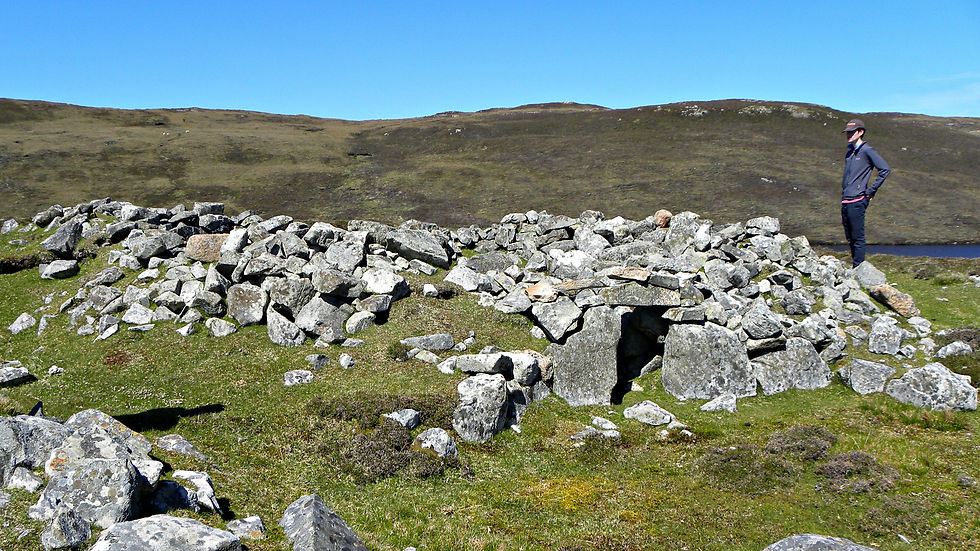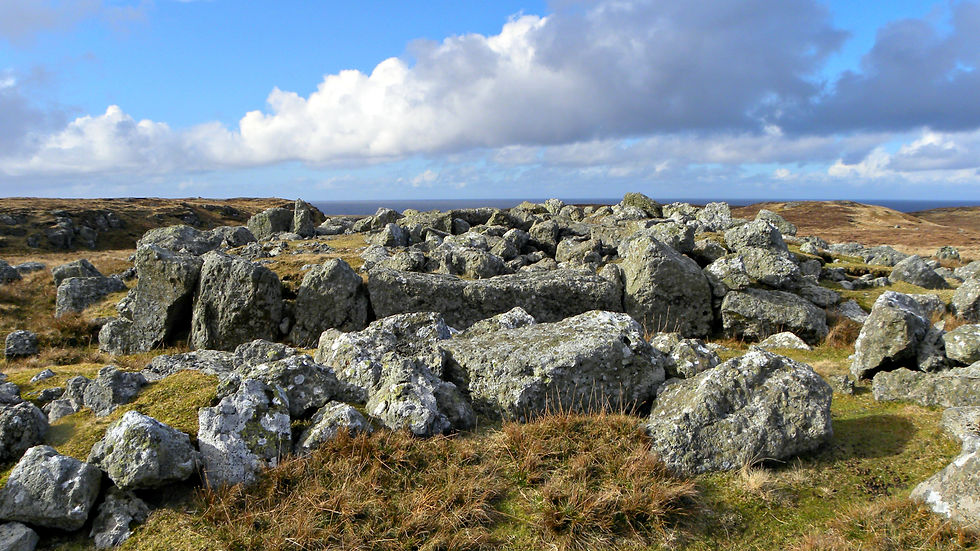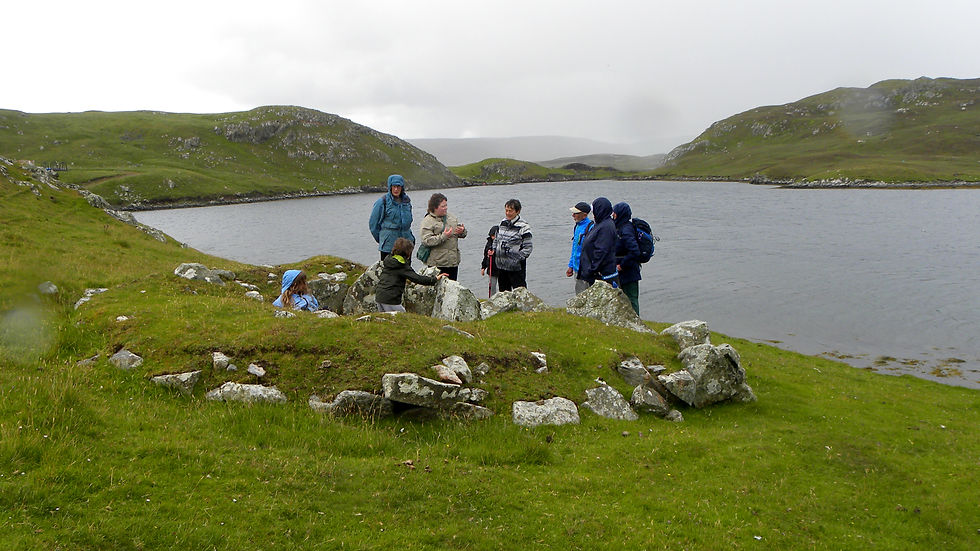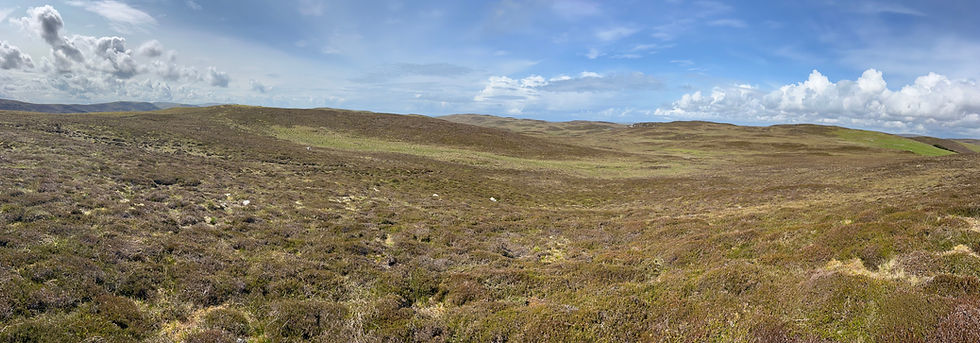Site in Focus - The Chambered Cairns
- Stephen Jennings

- Aug 17, 2018
- 2 min read

The most common chambered cairns we find in Shetland are heel-shaped, a plan almost completely unique to this location. Perhaps as old as 4000 BC, these Neolithic cairns were likely contemporary with other types of burial practice of the time such as the use of cists. Often built in areas of prominence, such as Scotland’s highest recorded chambered cairn located atop Ronas Hill, they are more frequently found in lower lying, more fertile valleys such as that at Mangaster. Vementry being one of the largest with a 2m high chamber, they are normally much smaller and may have appeared as a grassy knoll with a stone façade and small entrance not long after they were built. With a trefoil (imagine a clover leaf) or cruciform interior, they did occasionally contain a single chamber only and in some cases none is evident at all.
There are, though fewer, other forms of chambered cairns found in Shetland pointing to a less uniform tradition either in space or over time and an excellent example of this is March Cairn at Eshaness. A very large square cairn occupying a low ridge in what is now pasture, it was excavated by C S T Calder in 1949. A full 10m across, its once impressive size can only be guessed at by looking at the amount of stone surrounding it. An orthostat on each corner, it contains a short entrance passage which leads to a cruciform interior where two pot sherds, two stone discs and a quartz tool were found. These, however, may have been left much later than the original construction of the cairn. Of further interest here is a much smaller square cairn that can be found downslope to the northeast just a short distance away.
Of the interment rites we know little. When grave goods are found they are few, a handful of pottery sherds or tools, which gives us no real insight into their belief system. Bones, disarticulated and from a variety of bodies, or ash don’t tell us much either; the former exceptionally rare and incomplete, the latter seemingly from post-interment rites. With a forecourt associated with many of the cairns, one can imagine that much of the ritual occurred outside and the remains placed inside as a last act in the ceremony.
Who was buried in the chambered cairns is also unknown to us today. They would have been communal structures, perhaps familial, and may have contained the most important people of the community, these houses of the dead so often found close to the houses of the living. Built by many hands, it is not a stretch to ascribe a reverence to the denizens within, the careful construction testimony enough, and with so few bodies while so many were living at the time there must have been a special concession to such an elaborate burial.
Many of the better-preserved chambered cairns are easy to reach – Islesburgh and Mangaster a short walk over uneven ground, March Cairn a mere five-minute walk from the road on an easy slope – so they are well worth the time to visit and regard.
For Further Information:
Ancient Shetland by Val Turner
An Outline of Shetland Archaeology by John Stewart
March Cairn


Islesburgh








Comments